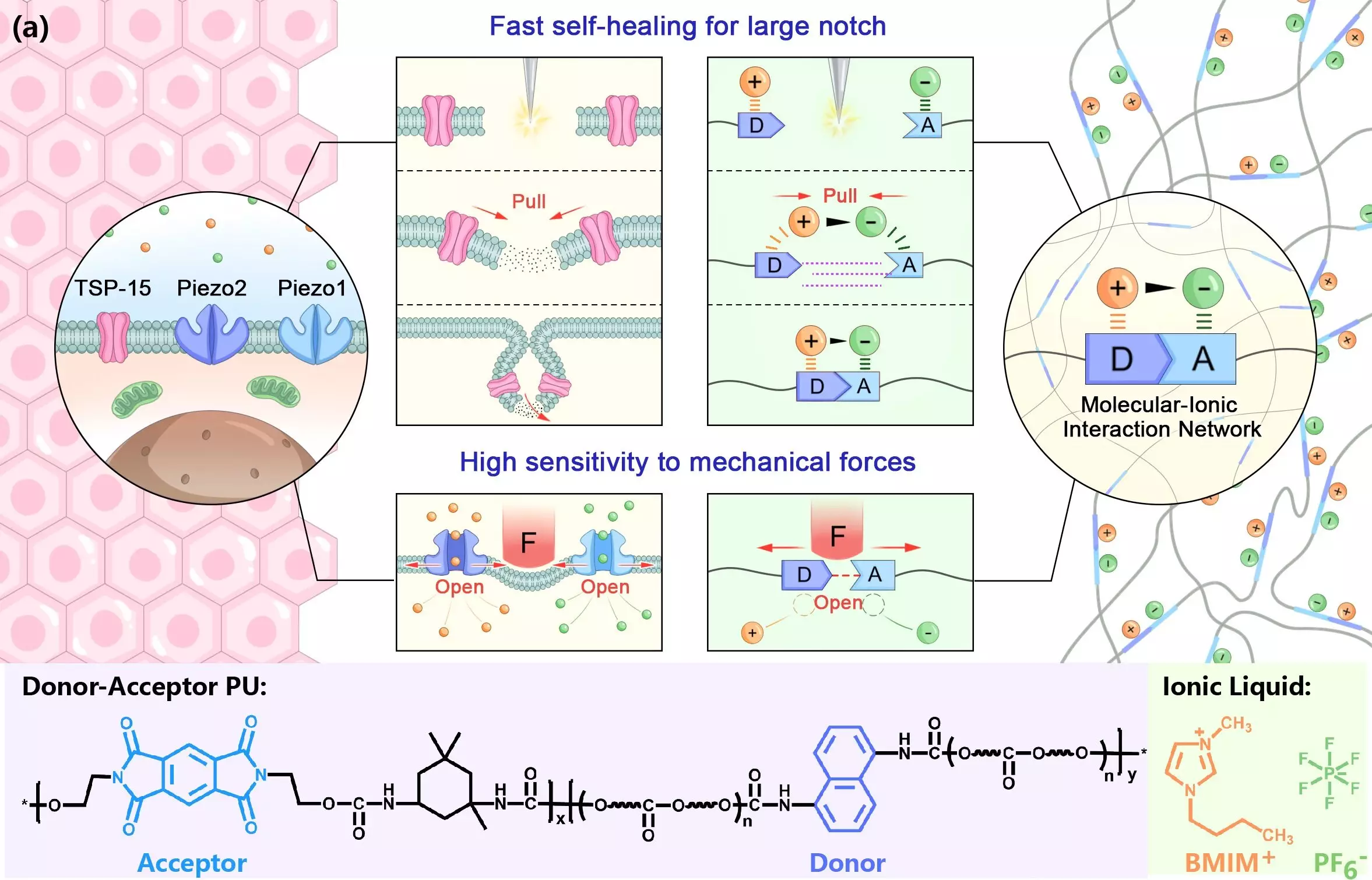The ongoing quest for advanced materials in healthcare has led researchers at the Ningbo Institute of Materials Technology and Engineering (NIMTE) to unveil a groundbreaking innovation: a mechano-responsive elastomer known as i-DAPU. Spearheaded by Prof. Zhu Jin, this development is not just a leap forward; it’s a paradigm shift in the creation of iontronic skin. Published in the distinguished journal Advanced Functional Materials, this study could potentially redefine how we perceive human-machine interactions, particularly in clinical settings.
Hearing about biomimetic flexible sensors is increasingly common, as they pave the way for intelligent tactile perception systems. What sets i-DAPU apart is its inherent dual capability—self-healing and synchronous sensing—mirroring the human skin’s regenerative properties and responsive touch sensation. Unlike other research, which primarily enhances a singular function, this project focuses on the harmonious development of both self-healing efficiency and sensory sensitivity. This synthesis represents a refreshing departure from traditional methodologies, guaranteeing that strengths in one area don’t necessitate weaknesses in another.
Innovative Mechanisms at Play
The ingenuity behind i-DAPU stems from nature’s own self-repair mechanisms. Researchers were inspired by transmembrane proteins, such as TSP-15 and the Piezo family, known for their roles in cellular repair. They successfully incorporated multifaceted molecular-ionic sites into a composite system combining polyurethane and ionic liquid. Through this innovative method of integration—featuring donor-acceptor self-assembly groups—i-DAPU emerges as a robust mechano-responsive elastomer that is not only effective but also remarkably versatile.
The material’s capacity for traction-assisted self-healing is a game-changer, achieving an impressive metric of 72 μm/min. Accompanying this is the dual-channel synchronous sensitivity measurement, clocking in at a staggering 7012.05 kPa^-1. These figures represent substantial improvements over previous technologies, setting new benchmarks for future research in the field. This means that the i-DAPU sensor not only heals itself but does so swiftly while retaining the ability to respond accurately to external stimuli.
Transforming Health Care Applications
The practical applications of i-DAPU go beyond the lab, venturing into real-world scenarios, particularly in the health care industry. With its deployment in intelligent muscle strength detection systems, i-DAPU proves its ability to monitor subtle changes in muscle function. Leveraging advanced deep learning algorithms, the resulting system boasts an astonishing accuracy rate of 99.2% in classifying muscle strength levels. Such high fidelity in muscle monitoring indicates a potentially transformative solution for physiotherapy and rehabilitation, allowing for nuanced patient assessment and more tailored therapeutic interventions.
In this age where precision medicine is gaining traction, the collaborative synergy achieved in this project may open the floodgates to future innovations. The integration of mechano-responsive elastomers like i-DAPU into wearable technologies signals a colossal leap forward, enhancing both patient care and the technological interface between users and machines.
By presenting a novel approach to the design and application of iontronic skin, the researchers at NIMTE have not only contributed to the academic field but may also have set the stage for the next generation of intelligent health monitoring devices, which could become integral to personalized medical treatments.

